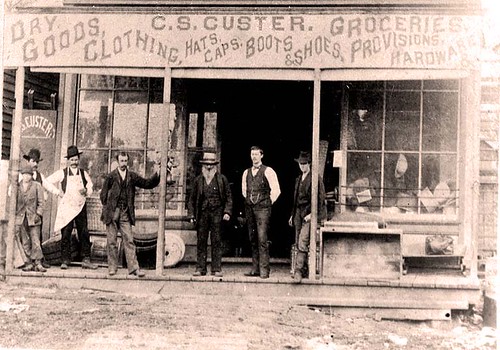At our house, Sunday is Grocery Shopping Day.
We start with our standard grocery list we print out. I figure out the dinners for the week, circling the items we will need. My husband gathers the coupons, and off we go!
Our journey usually lasts about 2 hours, as we visit up to 7 stores. Our first stop is Jewel. It's only about a block from our house. It's a large supermarket, popular in the Chicago area.
Back in my youth there was the A&P, Jewel Tea and National Tea. These were the big chains. We only had one family car, and my dad took that to work. So my mom & us kids would walk to the grocery store. Some ladies used their own shopping carts to take their groceries home. My mom used the buggy, even after my youngest brother had outgrown it.
On our outings with my mom, we would often make a stop at the butcher shop, the bakery or the drug store.
Next comes Eurofresh, where we buy our produce. It caters to a lot of immigrants who can buy foods imported from their native lands.
Growing up in my neighborhood, there was a little corner store every few blocks. We used to walk to Ann's Groceries, which was probably 20' x 20'. The old man behind the counter used a grabber to reach things off the tall back shelves. No cash register was in sight. He would take a stubby pencil and tally your list on the back of the paper bag. He'd also weigh the bulk items for you. I loved Hostess Cupcakes wrapped in cellophane. I'd take the frosting off and eat that first, then lick the cream out of the center—yum!
Next is Wal-Mart. We only stop there once in awhile.
Whole Foods is next on our route. We buy our eggs there because they are free range. They also have a lot of vegetarian choices we don't find in the other stores.
I remember when Wanzer's milk was delivered to our house, and Terry remembers a bread truck. My little brother wanted to be a milk truck when he grew up (not the driver... the truck). And who could forget the Good Humor truck! Sometimes, I still run outside when the ice cream truck comes. My grandfather worked with his older brother on an ice truck as a youth (horse & buggy), delivering ice door-to-door.
Our last stop is Trader Joe's. This is my favorite store! Their prices are great, and they have simple ingredients in most of their packaged foods.

In my lifetime, supermarkets have tried to become one-stop-shops for groceries, drugs, liquor, meat, bakery items, health care, restaurants, toys, automotive... you name it.
Meanwhile, we've tended to begin going back to a simpler form of shopping. We make more stops at specialty stores to pick up various items. We sometimes stop at Farmers' Markets to pick up fresh local produce. We always bring our cloth bags when grocery shopping, eschewing the paper-or-plastic offered. Sure, we waste a bit more gas because these store take us on a 16-mile round trip journey, but we save overall. No more waxed fruits & veggies. The dented ones are more organic. No pesticides, no preservatives, no added coloring when we can avoid those things. We buy fresh food and cook from scratch as often as feasibly possible with our busy schedules.
How did people get their groceries in the 19th century?
The term "grocery" developed in the 19th century. It primarily meant "liquor store." Country and general stores were all over the US. Rural people made regular journeys to nearby towns to pick up things they didn't produce themselves. City folk could visit butchers, bakeries and dry goods stores. Open-air markets existed from ancient times to the present, and large public indoor markets were common on the East coast.
Fresh local food was available seasonally, and for winter, food could be dried, salted, smoked or pickled. Root cellars kept root vegetables cold and preserved. Canning wasn't invented until 1810. Street vendors peddled many types of food in the cities.
I have some great memories of old-fashioned street vendors. I've lived through good times! We had a scissors grinder who would push his cart down our street and sharpen knives and scissors. There was a distinctive bell that would let you know he was coming. My mom remembers the rags-old-iron man coming around. But I digress...
Remember these?
Back from our grocery shopping excursion, it's time to put away all our goods. What a wonderful country we live in, full of abundance. Now there's a Walmart nearly everywhere. Which is good. But it's sad to think of all the mom-and-pop stores that will never return.
Some fun links:
